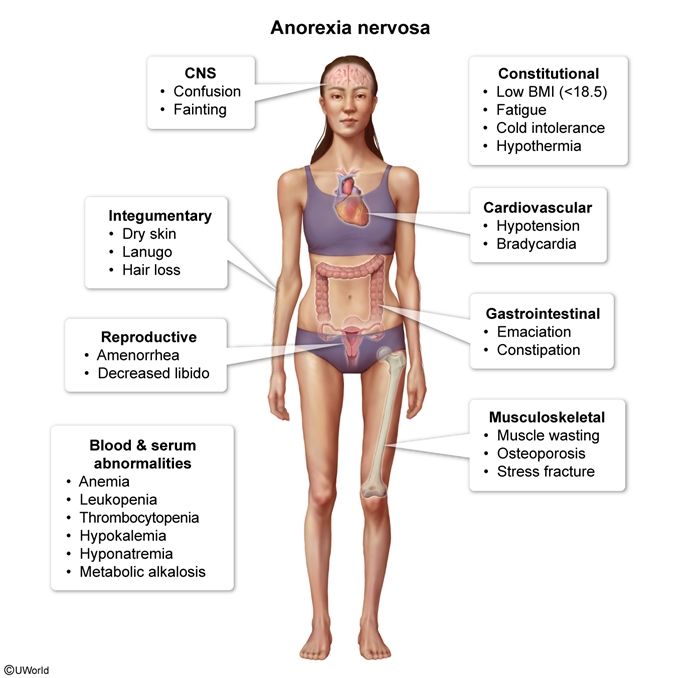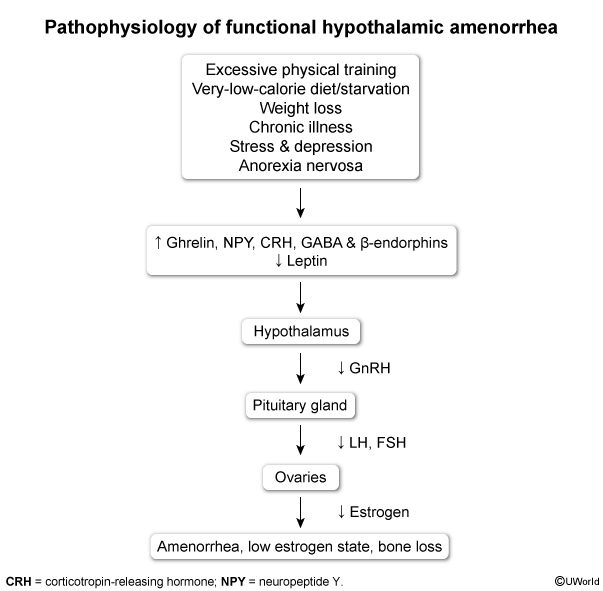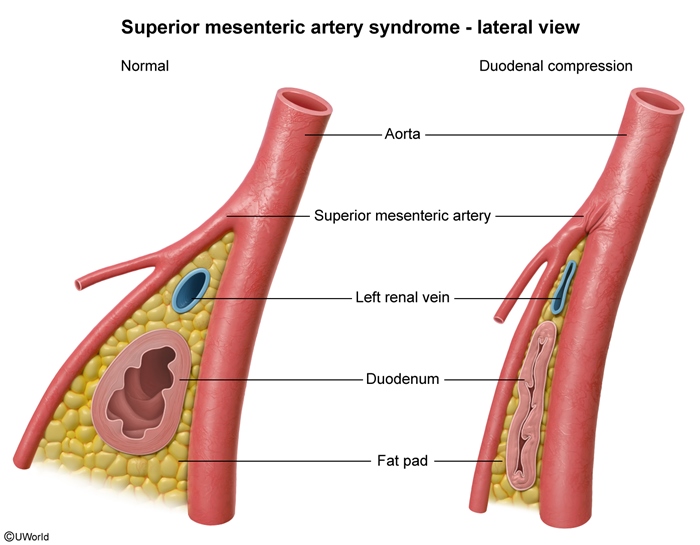Anorexia Nervosa
Article Sections
Introduction
Anorexia nervosa is an eating disorder characterized by low body weight due to restriction of caloric intake, distorted body image, and fear of weight gain. The onset typically occurs during adolescence or young adulthood. Individuals with anorexia nervosa may have limited insight into the dangers of low body weight due to a preoccupation with maintaining thinness, which can result in nonadherence to treatment recommendations.
Epidemiology and risk factors
The lifetime prevalence rate of anorexia nervosa is estimated to be 0.3%-1% and is more common in female patients (10:1 female/male ratio).
Several risk factors may contribute to the development of anorexia nervosa, including:
- Genetic predisposition: first-degree relative with an eating disorder, depression, or bipolar disorder
- Psychologic factors: perfectionistic tendencies and obsessional traits, history of childhood trauma (eg, abuse, neglect)
Continue Learning with UWorld
Get the full Anorexia Nervosa article plus rich visuals, real-world cases, and in-depth insights from medical experts, all available through the UWorld Medical Library.
Figures


